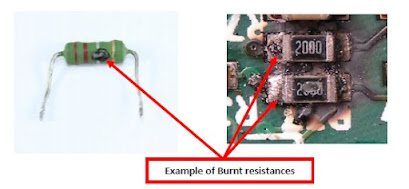Multiprocessor Operating System: Examples, Types, Advantages, & Feature!!
Multiprocessor operating system is special operating system that is used to boost up the performance of multiple CPUs along with a single computer system. So, here you will learn about what is multiprocessor operating system and its examples, types, and features; involving with advantages and disadvantages of multiprocessor operating system with ease. This is unique a post over the internet; therefore, after reading this article; you will definitely fully learn about multiprocessor operating system without getting any problem.
What is Multiprocessor Operating System?
Definition – Multiprocessor operating system allows the multiple processors, and these processors are connected with physical memory, computer buses, clocks, and peripheral devices. Main objective of using multiprocessor operating system is to consume high computing power and increase the execution speed of system.
- What is Multiprocessor Operating System?
- Components of Multiprocessor O/S
- Types of Multiprocessor O/S
- Advantages of Multiprocessor O/S
- Disadvantages of Multiprocessor O/S
- Characteristics of Multiprocessor O/S
- Examples of Multiprocessor O/S
Components of Multiprocessor Operating System
CPU – CPU is capable to access memories as well as controlling the entire I/O tasks.
IOP – I/P processor can access direct memories, and every I/O processors have to responsible for controlling all input and output tasks.
Input/Output Devices – These devices are used for inserting the input commands, and producing output after processing.
Memory Unit – Multiprocessor system uses the two types of memory modules such as shared memory and distributed shared memory.
Likely Asked Questions)
What is multiprocessor operating system with example?
A multiprocessor operating system is going to able of running various programs simultaneously, and most modern network operating systems (NOSs) support multiprocessing, for examples are Windows NT, 2000, XP, and Unix.
What is multiprocessing operating system definition in simple words?
Multiprocessor OS is special operating system that is used to boost up the performance of multiple CPUs along with a single computer system.
Why to use multiprocessor system in operating system?
The multiprocessor is a special computer system with getting multiple CPUs (Central Processing Units) share full access to a common RAM; and primary goal of using multiprocessor is to get boost up the system’s execution speed and overall performance.
What are the examples of multiprocessor operating system in real-life?
There are many examples of multiprocessor OS, which are using in your daily life like as Windows NT, Solaris, UNIX, OS/2 & Linux, SunOS Version 4, IOS, Beckton, Westmere, Sandy Bridge, and more.
What are the different types of multiprocessor operating system?
Multiprocessor operating system is classified into six different categories like as Symmetric Multiprocessor, Asymmetric Multiprocessor, Shared Memory Multiprocessor, Distributed Memory Multiprocessor, UMA Multiprocessor, and NUMA Multiprocessor. Each one is explained above in this article; you can check them.






Comments
Post a Comment